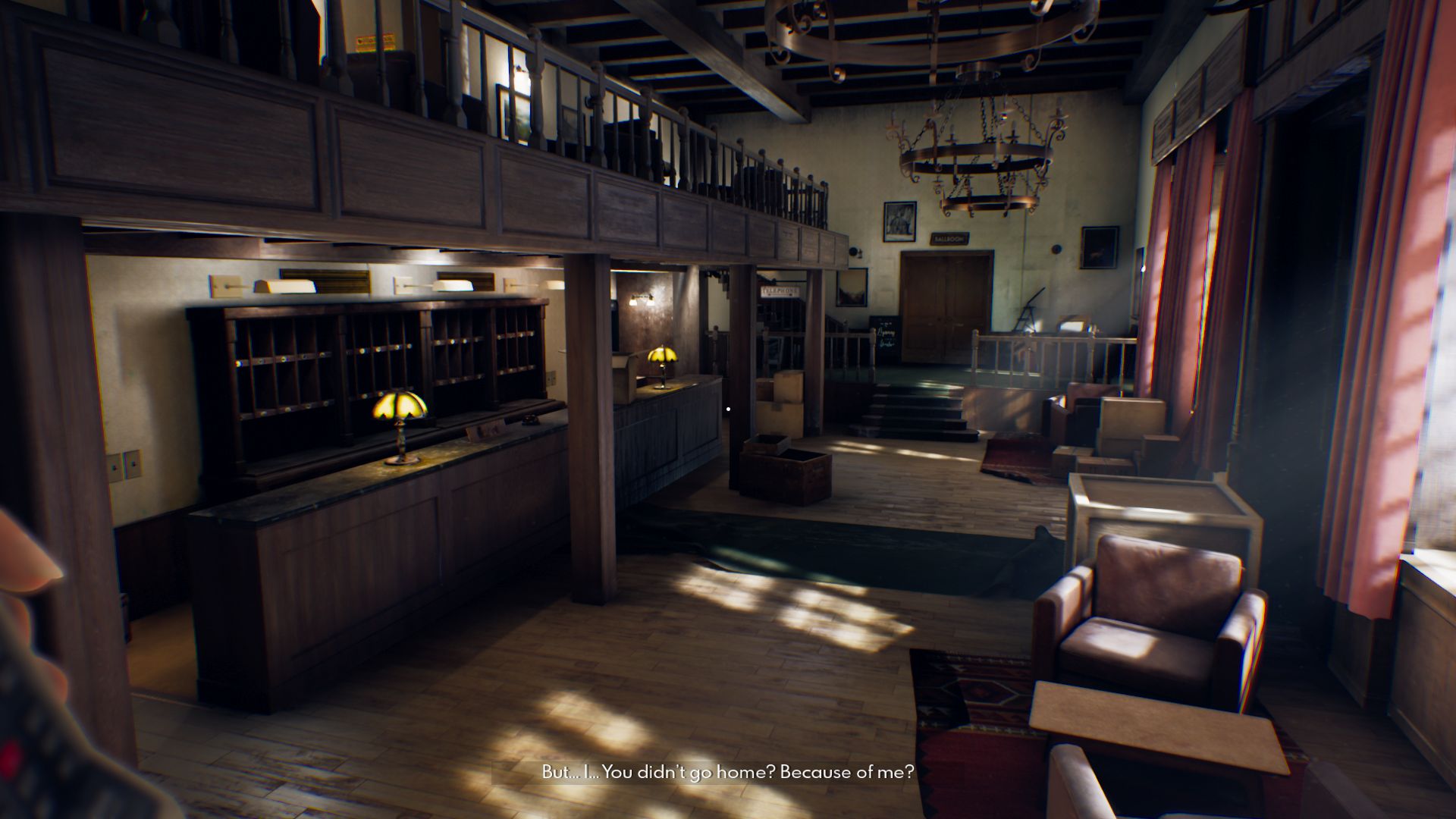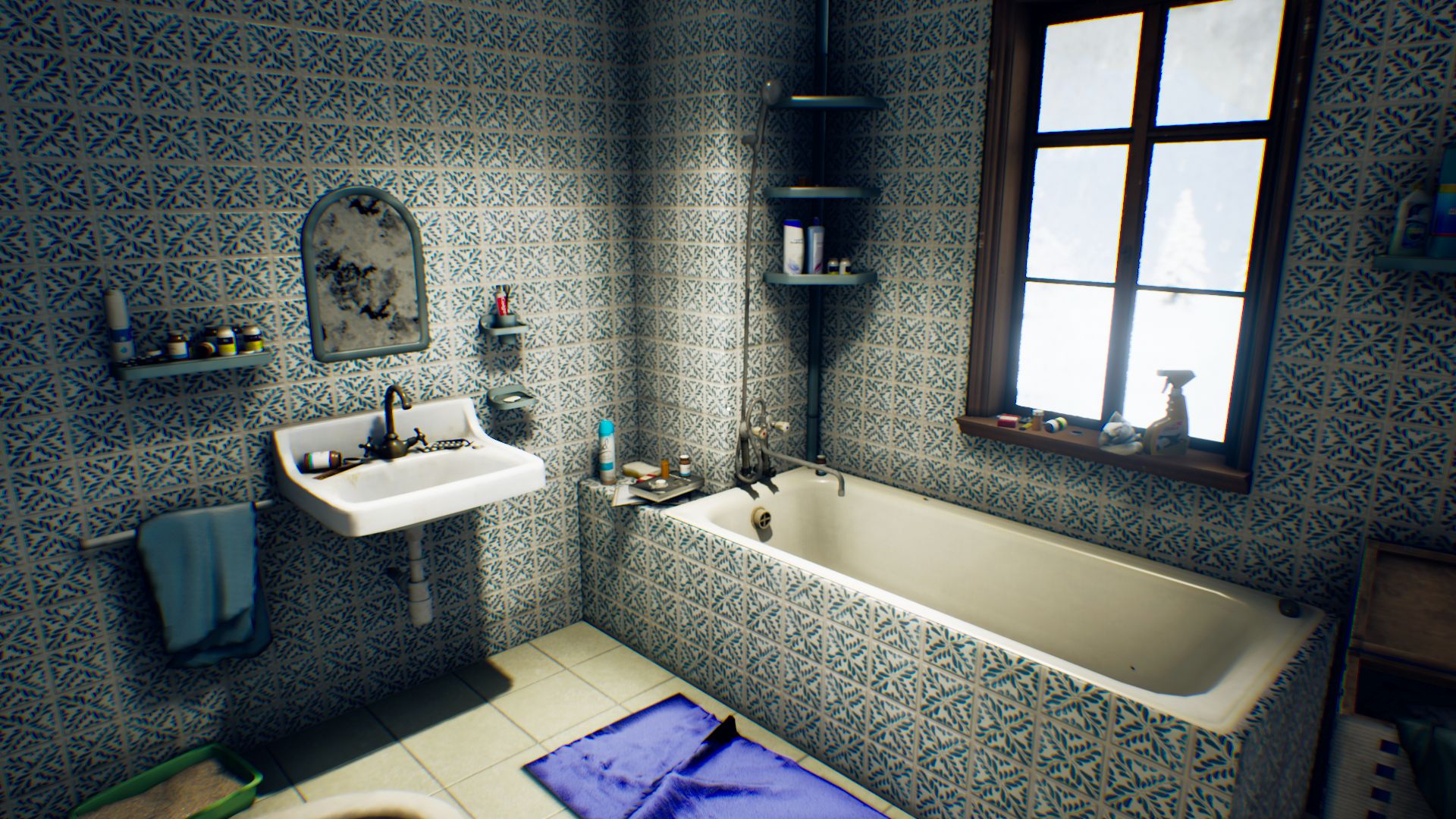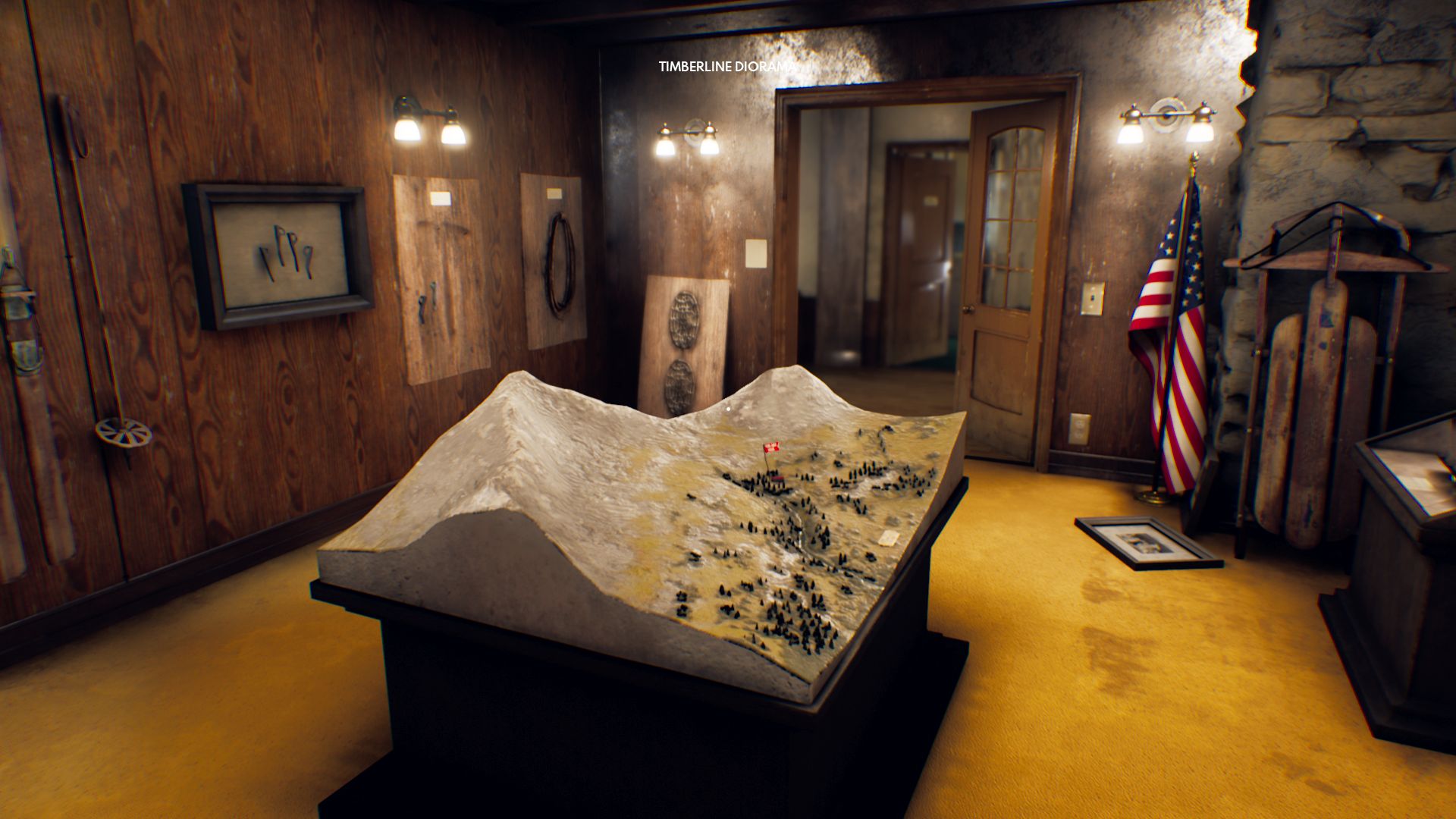In the last decade, we have seen hundreds of horror games similar to this title, and although The Suicide of Rachel Foster does not do anything particularly original, it does manage to combine a narrative that glues you to the screen until the credit rolls. The developer studio draws inspiration from some of the most lauded titles of its kind. It is not difficult to make comparisons with Gone Home, Firewatch, Layers of Fear or Virginia. The tricky thing is not doing it. Despite looking at the best, the execution shows that to excel in such a congested genre, it is not enough to put the ingredients in a blender, but at least you have to worry about adding the right amount of each thing and knowing what to mix to get the formula right.
An abandoned hotel on top of a mountain
The plot of the game takes us to an abandoned hotel on top of a mountain in Lewis and Clark County, Montana, United States. After a simply masterful opening sequence, Nicole returns to the family hotel where she lived until adolescence. Her father died long ago, and after the death of her mother, she has become the heir, forcing her to go to the place with an expert to establish the sale price of a site that brings back painful memories of the past and traumas not overcome: Nicole and her mother left town when it came to light that his father had had a love affair with a teenage girl who ended up committing suicide. How could it be otherwise, when arriving at the sinister hotel, she finds that the expert has not yet arrived and strange things are beginning to happen. As if that were not enough, she cannot leave the place because of an intense snowfall that will leave her trapped for days. The similarities with a certain Stanley Kubrick film do not stop there.
 Fortunately, but also a bit, unfortunately, Nicole is not totally alone. From the first moments of the adventure, she finds an old cellular phone, (the kind in the shape of a brick; the game is recreated in the 90s environment with cassette tapes, VHS and other technological paraphernalia of the time) with which he communicates with Irving, a FEMA agent who begins by updating her on how the snow is going, and with whom she ends up talking constantly to say good morning, to update her on what she finds exploring the hotel, and even to tell her about her personal problems. As in Firewatch, a distance relationship with a character that you only know through his voice, but unlike in Campo Santo’s work, the conversations are not so well written, sometimes the calls are heavy due to their duration and ultimately, the relationship seems artificial and forced. And while it can be argued that these talks function as a relief to the tense exploration of the hotel, that reasoning is an excuse for the fact that they break the immersion even in the most exciting moments. Also, the decisions we make with our responses to Irving does not affect the course of the plot (something that does not have to be necessary), nor in a forceful way the development of the conversation.
Fortunately, but also a bit, unfortunately, Nicole is not totally alone. From the first moments of the adventure, she finds an old cellular phone, (the kind in the shape of a brick; the game is recreated in the 90s environment with cassette tapes, VHS and other technological paraphernalia of the time) with which he communicates with Irving, a FEMA agent who begins by updating her on how the snow is going, and with whom she ends up talking constantly to say good morning, to update her on what she finds exploring the hotel, and even to tell her about her personal problems. As in Firewatch, a distance relationship with a character that you only know through his voice, but unlike in Campo Santo’s work, the conversations are not so well written, sometimes the calls are heavy due to their duration and ultimately, the relationship seems artificial and forced. And while it can be argued that these talks function as a relief to the tense exploration of the hotel, that reasoning is an excuse for the fact that they break the immersion even in the most exciting moments. Also, the decisions we make with our responses to Irving does not affect the course of the plot (something that does not have to be necessary), nor in a forceful way the development of the conversation.
 The dreadful feeling of loneliness
The dreadful feeling of loneliness
Really, it is a pity that at times the feeling of being trapped in the hotel is lost while we have the need to explore it to fight against the weight of our past, because the recreation of that place and how successful its setting is, which achieves a more distressing similar to when we visit a friend’s grandmother’s house than when visiting a horror house, is excellent. Exploring its corridors, its spacious rooms, the machine and maintenance places, its corridors and the few rooms that are open offers a similar feeling to when we first entered the house in Gone Home.: Something is not right here, but we are not sure if there is a supernatural presence or if the environment is overloaded by the dramas of the past that observed these walls. In fact, this is the only comparison in which the title surpasses its inspiration, but also because Fullbright’s work is eight years old. The Suicide of Rachel Foster has magnificent moments in which we will have to use utensils to explore, like when it has us take pictures with a Polaroid to use the flash and thus go through unlit corridors. The problem is that these good ideas are used in situations told within a title that not only doesn’t innovate by genre standards but feels dated.
 The sound setting is largely to blame for the terrifying moments we have experienced when exploring the corridors of an abandoned hotel that is creepy. Obviously, the crackle of the lights, the stains of mold on walls that have been neglected for years and the slowness of the protagonist’s walk make turning every corner uncomfortable, but that is minor when compared to what they have achieved with binaural sound… The forcefulness of each step on the crackling wood in the absolute silence that surrounds us, with the exception of the noise of a nearby machine, is in itself disturbing, but on more than one occasion we have turned our heads quickly when we heard a nearby blow or a click that seemed to come from behind and gave us the goosebumps on more than a couple occasion.
The sound setting is largely to blame for the terrifying moments we have experienced when exploring the corridors of an abandoned hotel that is creepy. Obviously, the crackle of the lights, the stains of mold on walls that have been neglected for years and the slowness of the protagonist’s walk make turning every corner uncomfortable, but that is minor when compared to what they have achieved with binaural sound… The forcefulness of each step on the crackling wood in the absolute silence that surrounds us, with the exception of the noise of a nearby machine, is in itself disturbing, but on more than one occasion we have turned our heads quickly when we heard a nearby blow or a click that seemed to come from behind and gave us the goosebumps on more than a couple occasion.
A rundown hotel
But the general feeling we have is that all the good elements of the game: the design of the hotel, the work of the sound, the exploration instruments, etc., are wasted. Both for being an experience that is short despite lasting almost four hours for not reiterating the good ideas, and for dirtying the good moments with incomprehensible decisions in a game of the genre, such as momentarily taking control of ourselves every time we open the door. of a corridor (by not handling the camera, the possible shock is anticipated), dividing the structure of the game into days that end with a fade to black every time something important to the plot happens, or giving no reason to get lost for a hotel that we wish was more interactive and more loaded with environmental narrative.
 Final Thoughts
Final Thoughts
Despite all these flaws, the work of One-o-one Games is reminiscent of the cinematography of M. Night Shyamalan, leaves us glued to the screen, constantly eager to know the next bit of information, from the exploration, of the dialogues with Irving or Nicole’s memories, about the events that occurred in a hotel that functions as a physical representation of the protagonist’s cloudy past. The problem is that The Suicide of Rachel Foster isn’t The Sixth Sense, it’s more like The Forest.
We prepared this review with a digital review key for the PS4 Pro version of the title provided by Terminal PR.





Evat
This piece really captured my attention! The points made were compelling and well-articulated. I’d love to hear what others think about this topic. Click on my nickname for more interesting reads and discussions.